Volunteers document a rise in homelessness in Brown County
Dozens of volunteers participated in a July 2025 point-in-time count to assess increasing levels of homelessness in Brown County — some have previously lacked shelter themselves, and advocates say documentation is the first step in addressing the challenge.
Wisconsin Watch
September 3, 2025 • Northeast Region
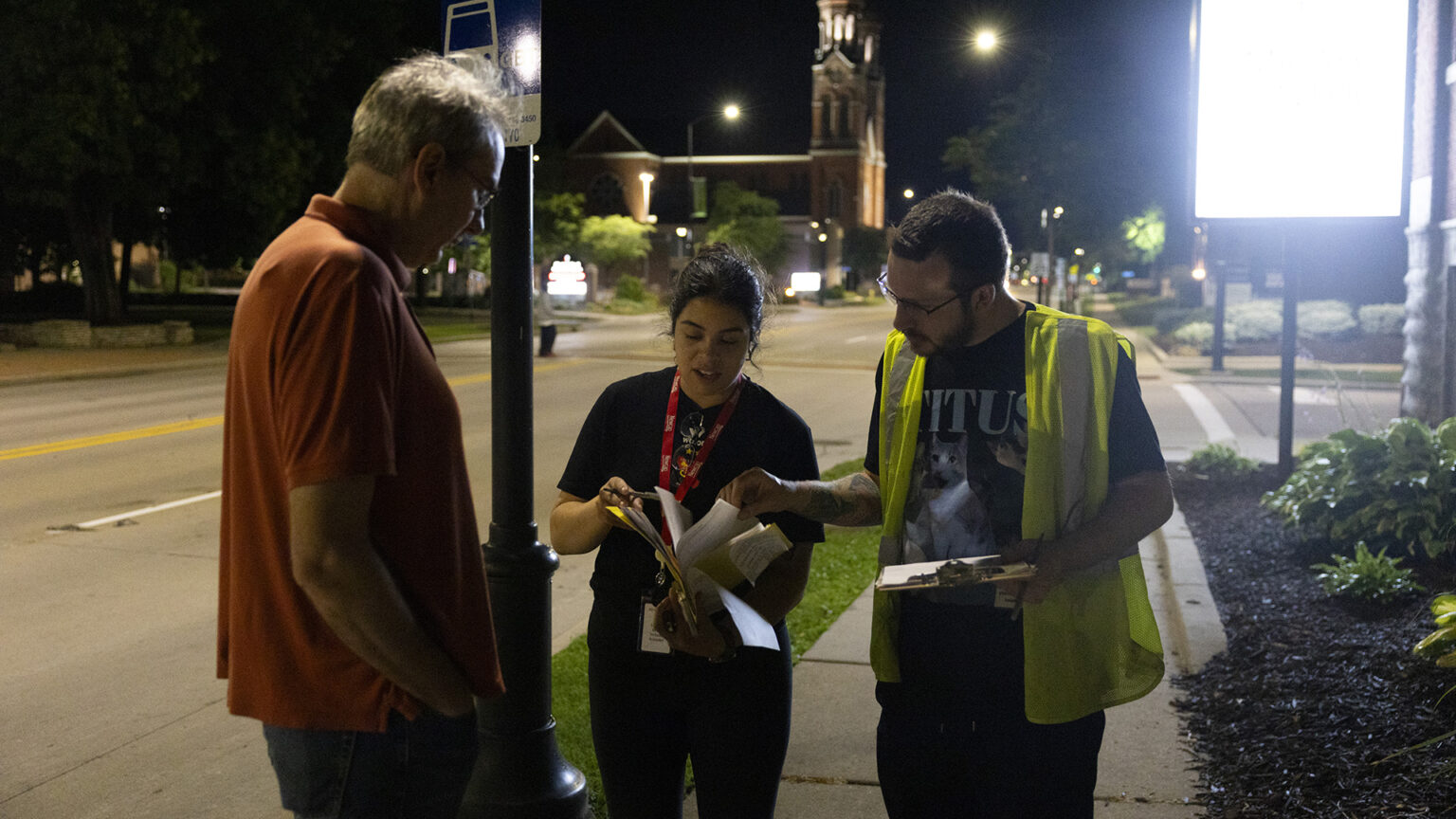
From left, state Sen. Jamie Wall, D-Green Bay, Newcap, Inc. employee Lucia Sanchez and volunteer lead Cody Oberhuber plan their next steps during the summer point-in-time count at 12:33 a.m. on July 24, 2025, in downtown Green Bay. (Credit: Joe Timmerman / Wisconsin Watch)

This story was produced and originally published by Wisconsin Watch, a nonprofit, nonpartisan newsroom.
At 4:31 a.m. the first slivers of light peeked through dark clouds over Green Bay’s waters.
Along the edge of Point Comfort in the town of Scott, a pair of volunteers surveyed the landscape for people experiencing homelessness as the summer “point-in-time” (PIT) count wound down in Brown County.
One was Cody Oberhuber, a county economic support specialist. He has missed just one count since January 2022, initially working as part of his former job at the anti-poverty agency Newcap, Inc. His passion for talking to the people behind the numbers prompted him to return this year as a volunteer after switching jobs.
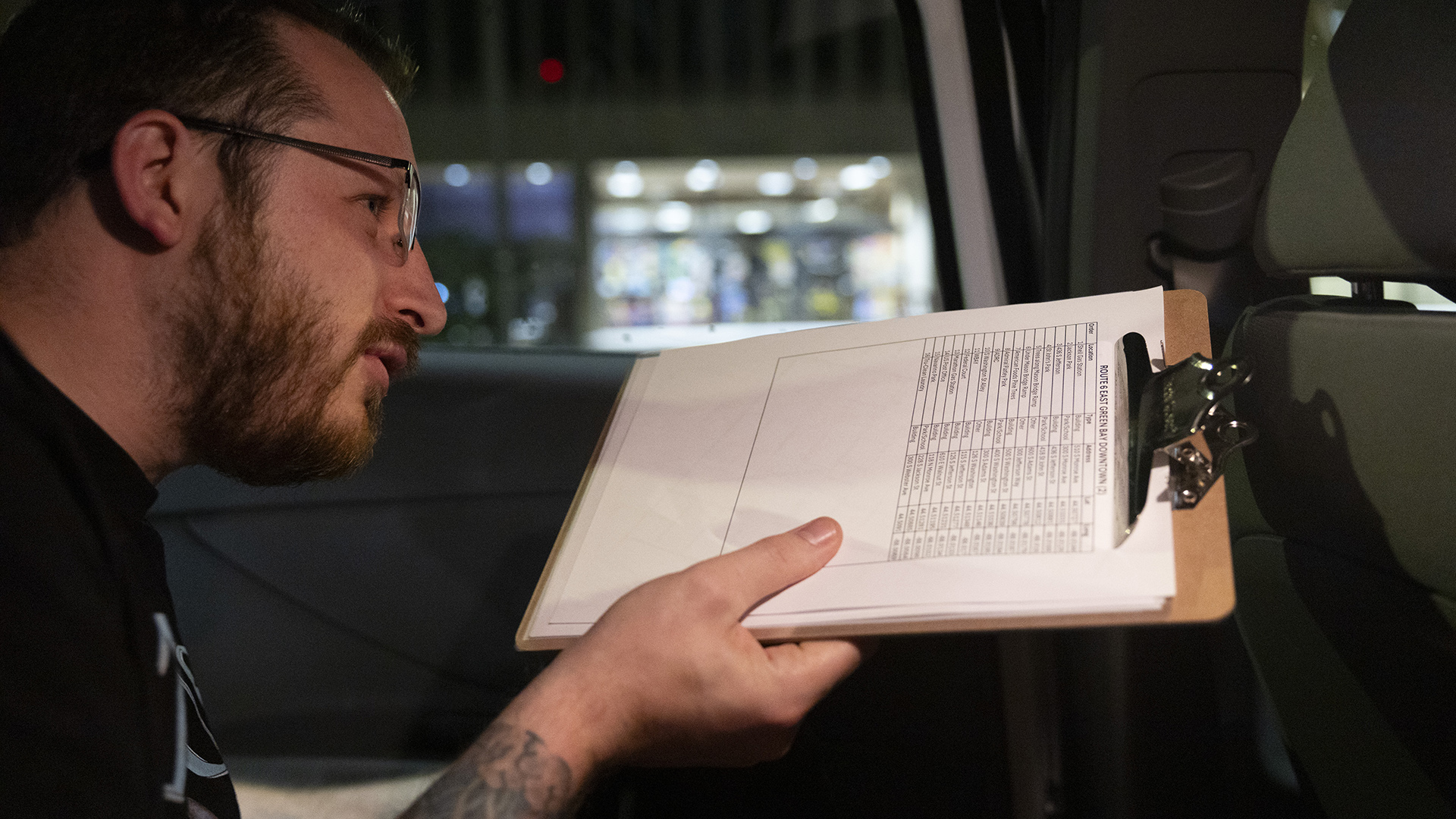
Cody Oberhuber, economic support specialist for Brown County, leads a group of volunteers during the first of three routes he was assigned to in the summer PIT count at 11:47 p.m. on July 23, 2025, in downtown Green Bay. After parking outside the Brown County Central Library, Oberhuber led the group across the east side of downtown. (Credit: Joe Timmerman / Wisconsin Watch)
“It gives you a fresh perspective of being boots on the ground talking to these individuals, you’re kind of looking at the humanity side of things,” Oberhuber said. “That’s what drives me, that’s my mission.”
Oberhuber joined 66 other volunteers between 11:30 p.m. to nearly 6 a.m. beginning on July 23, hitting spots where the group previously encountered people experiencing homelessness.
The PIT count serves as a one-night snapshot of the number of people experiencing homelessness in communities across the United States, including Wisconsin. Wisconsin Watch in January followed the annual winter count in Jefferson County — examining why the data recorded in the process underestimate the true levels of homelessness in communities, especially rural ones. The U.S. Department of Housing and Urban Development mandates such winter counts.
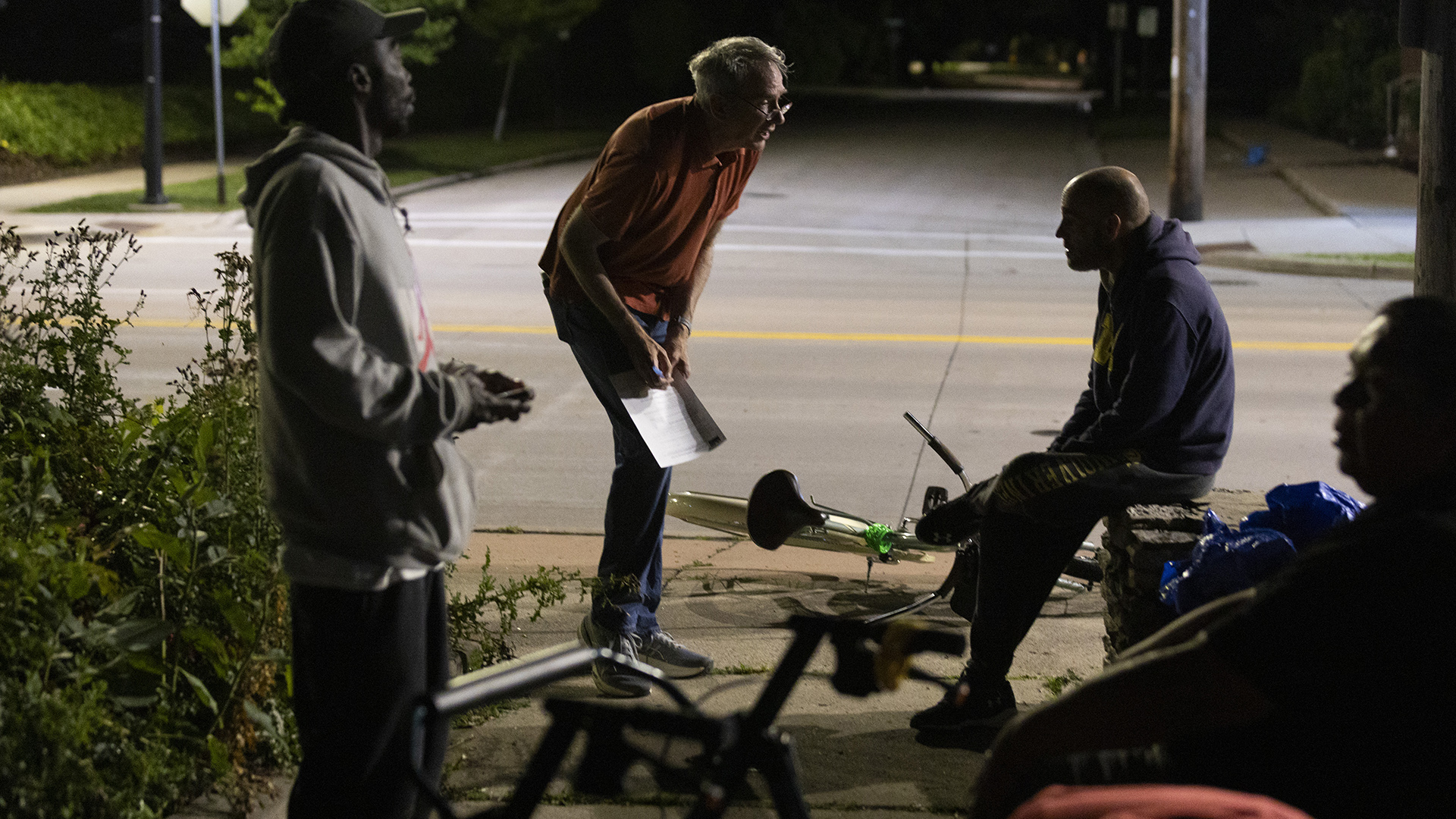
State Sen. Jamie Wall, D-Green Bay, second from left, fills out a survey while speaking with a man experiencing homelessness during the point-in-time count at 12:15 a.m. on July 24, 2025, at Jackson Square Park in Green Bay. The count marked Wall’s first year as a volunteer. He said he was motivated after hearing so much from his constituents about housing costs. (Credit: Joe Timmerman / Wisconsin Watch)
Wisconsin Balance of State Continuum of Care, which covers all 69 counties in Wisconsin besides Milwaukee, Dane and Racine, requires each county to also count during the summer, when the tally is typically far higher than winter, when freezing weather pushes more people to shelters.
The majority of Brown County volunteers most years work with direct housing providers or other housing-related programs, according to Meaghan Gleason, Newcap’s funder expert and the Brown County PIT count lead.
But in 2025, almost half of volunteers had no association with housing providers, a record number of unaffiliated folks. Thirteen volunteers shared that they previously experienced homelessness in their life. That’s a point of pride for Gleason.
To address the problem of homelessness, she said, “we need to include the people who know what that experience is.”
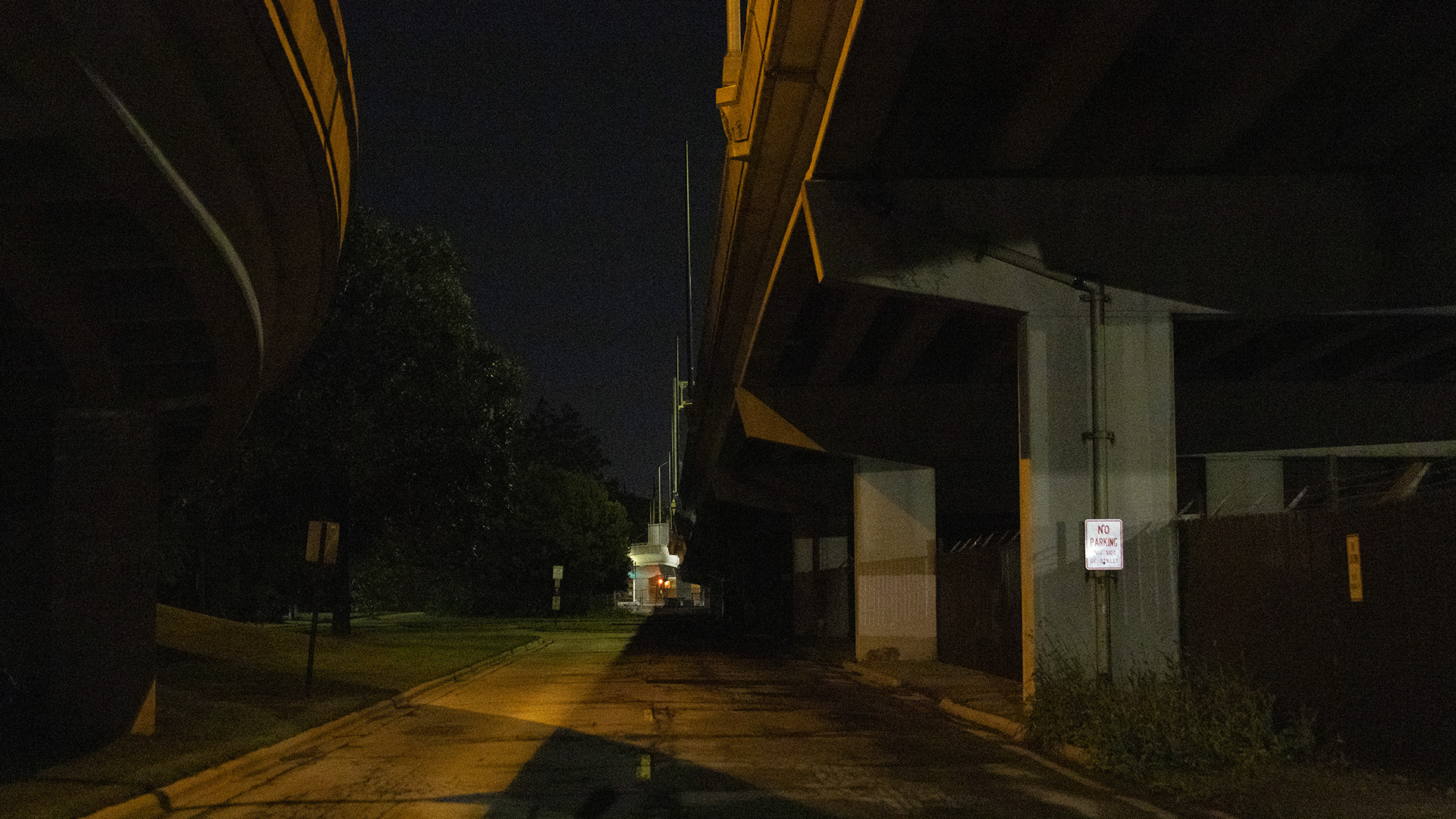
Volunteers search for people experiencing homelessness under the Mason Street Bridge ramp during the summer PIT count at 12:55 a.m. on July 24, 2025, in downtown Green Bay. (Credit: Joe Timmerman / Wisconsin Watch)
The Brown County volunteers broke into groups to cover more ground. In the county’s northwest corner, a group searched for people sleeping in cars in the rural village of Pulaski. In the county’s urban center, volunteers counted people camping in Green Bay’s downtown parks.
PIT counts often happen at night, when people settle into the places they sleep, Oberhuber said. This approach, he explained, prevents volunteers from simply assuming where someone stays.
Volunteers usually see the most unsheltered people on downtown Green Bay’s east side, and that was the case in July. Several people sheltered in open spaces and under hooded structures, often surrounded by their belongings: bikes, coolers, wheelchairs, bags and blankets. Some slept on church steps or on park benches. Bugs swarmed in the humidity following recent rain.
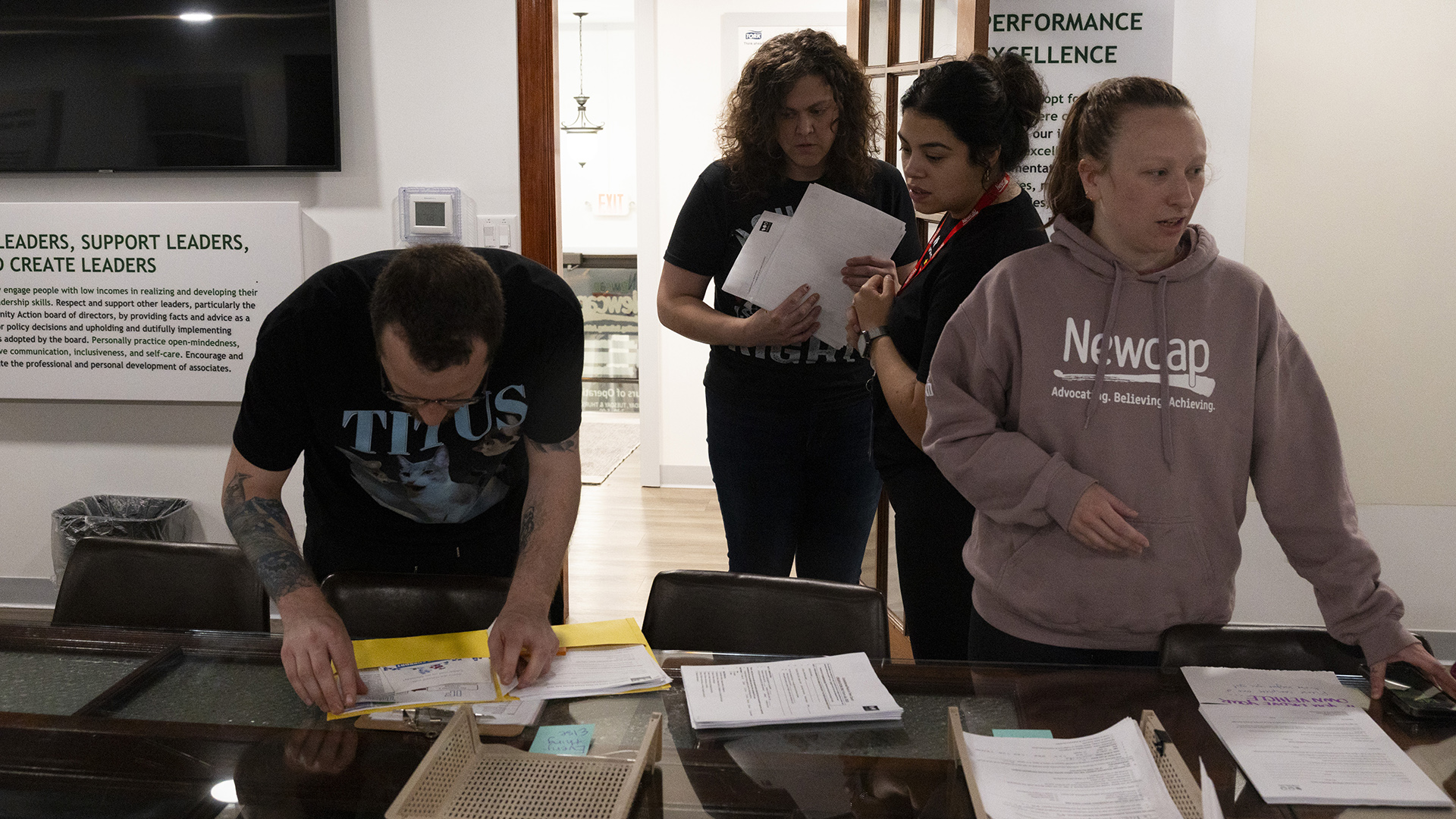
From left, volunteer lead Cody Oberhuber, Brown County count lead Meaghan Gleason and Newcap, Inc. employees Lucia Sanchez and Alexandra Richmond talk through the progress of the point-in-time count between routes at 1:45 a.m. on July 24, 2025, at Newcap’s office in Green Bay. (Credit: Joe Timmerman / Wisconsin Watch)
A volunteer asked a man where he had gone earlier to stay dry.
“Nowhere,” he replied. “I’m wet. I’m still wet.”
Others asked volunteers for food or dry tarps. Volunteers handed out gift cards and asked people to take a brief survey to shed light on what resources might help.
The surveys included questions such as: Have you served in the active duty or other armed forces of the U.S.? Are you fleeing or attempting to flee domestic violence, dating violence or stalking? Have you ever been in the foster care system? Is this the first time you’ve been homeless?

Volunteers drive alongside farm land in northwestern Brown County during the summer point-in-time count at 2:07 a.m. on July 24, 2025, heading to their route in Pulaski. (Credit: Joe Timmerman / Wisconsin Watch)
Some people answered questions they were comfortable with. Others thanked the volunteers and declined to participate.
“I’m going through enough as it is,” one person told the volunteers.
When people are found sleeping, decline to participate in the survey or are in locations volunteers can’t safely access, their presence is documented through observation forms. Although the official count tally excludes those observations, they paint a broader picture of the unhoused landscape. Outreach workers sometimes later follow up to verify their status and connect them with services.
Brown County’s official tally in July 2025: 179 people experiencing homelessness. That included 100 single individuals and 25 households with children. The official unsheltered count has increased each year since at least 2022, when 89 people were counted in July.
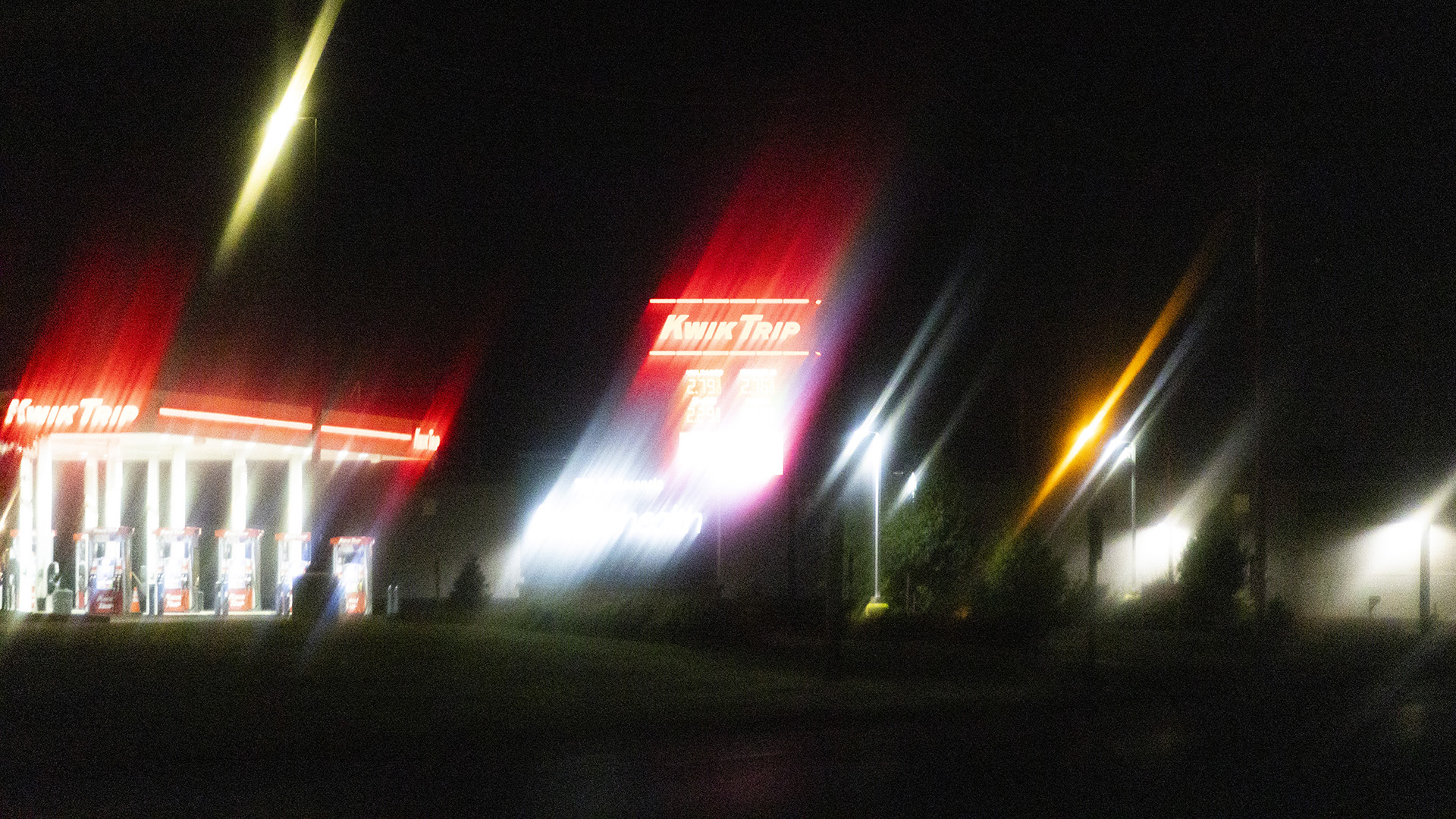
Volunteers drive into the parking lot of a Kwik Trip during their route of the summer PIT count at 2:28 a.m. July 24, 2025, in Pulaski. (Credit: Joe Timmerman / Wisconsin Watch)
Northwest of Brown County, Newcap’s Northeast Coalition counts unsheltered people in mostly rural Florence, Marinette, Menominee, Oconto and Shawano counties. The summer count recorded 36 people.
“That may not sound like much,” Gleason later wrote in an email. “But it is the highest count I have seen out of the last eight counts.”
In Brown County, volunteers tallied zero people in the rural areas Wisconsin Watch observed. But Oberhuber knows people are experiencing homelessness in communities like Pulaski, based on previous counts and conversations with police. Those people might not want to be found, Oberhuber said. They might intentionally set up camp outside of town or in the woods, where PIT count volunteers won’t look.
“That’s the difficulty with the rural count,” Oberhuber said. “There’s people out there, we just struggle to find them.”
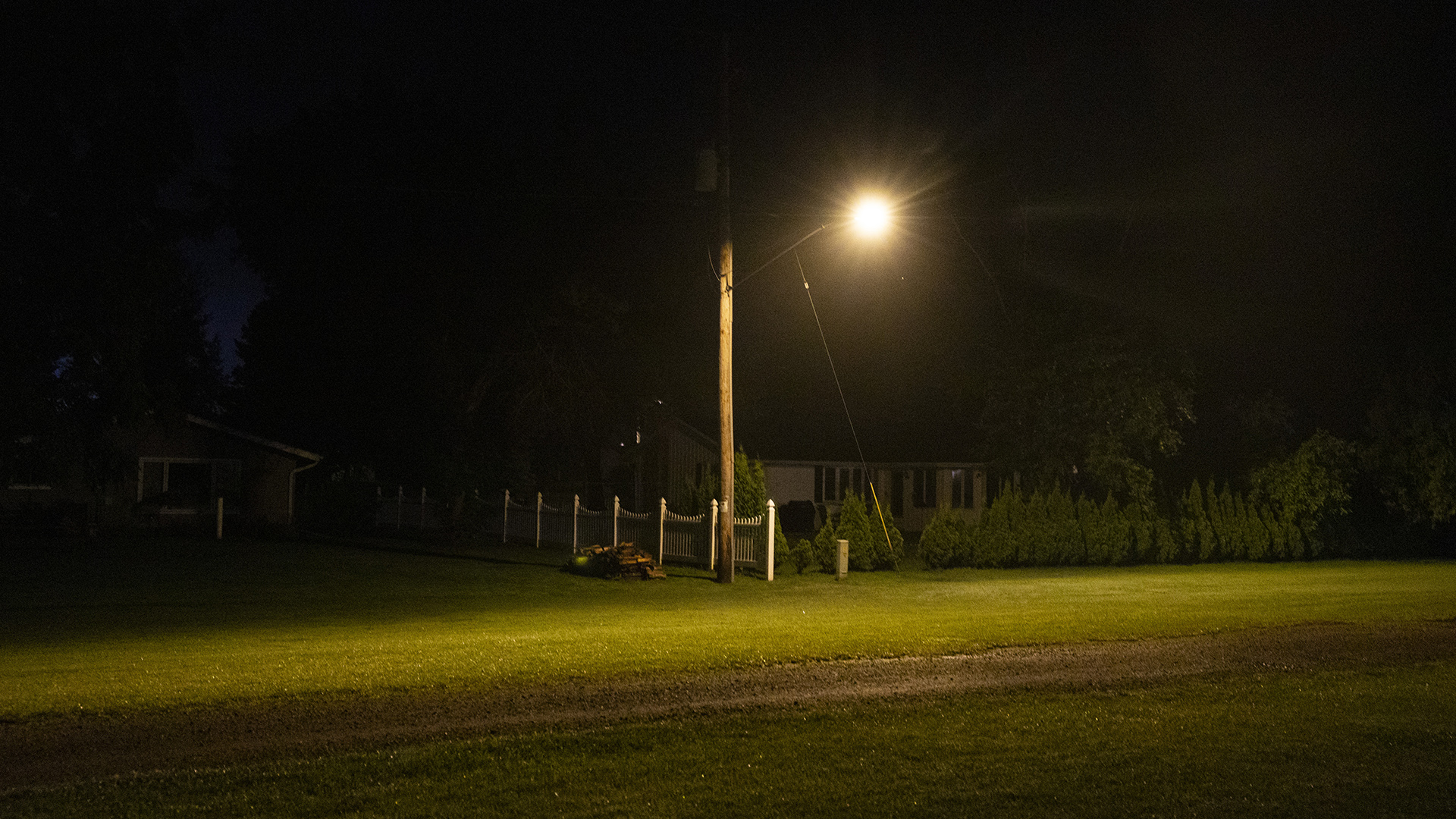
A lone street light glows as volunteers search for people experiencing homelessness during the summer PIT count at 2:57 a.m. on July 24, 2025, in Pulaski. (Credit: Joe Timmerman / Wisconsin Watch)
Gleason said a “happy accident” prompted her to work in housing services after having volunteered at a shelter in college. She wouldn’t give up her position as the PIT count lead for Brown County even if someone told her to.
She knows it’s impossible to count every person. But that’s what drives her to improve each count. Yes, homelessness is increasing, she said.
“But if we can also increase our efficiency and our ability to capture that data and connect with those people, then that’s the best we can do in that moment.”

An approaching sunrise illuminates the sky over Green Bay during blue hour as volunteers search for people experiencing homelessness during the summer point-in-time count at 4:31 a.m. on July 24, 2025, in the town of Scott. (Credit: Joe Timmerman / Wisconsin Watch)
How to get involved
The Wisconsin Balance of State Continuum of Care provides more information about local Wisconsin PIT counts. The nonprofit serves all counties except Dane, Milwaukee and Racine. Those counties are served by the Homeless Services Consortium of Dane County, the Milwaukee Coalition on Housing and Homelessness and the Racine Continuum of Care, respectively.
Gleason suggests starting with a local county’s coalition, but asking staff at shelters, drop-in centers or outreach centers how to help.
“I don’t think there’s anyone doing this work who would turn down a genuine offer for help,” Gleason said.
Need shelter or housing resources?
Dial 211 or 877‑947‑2211 from any phone in Wisconsin to be connected to referral specialists with 211 Wisconsin, or text your ZIP code to 898211.
In Brown County, the Homeless and Housing Coalition offers a Places to Go guide for people experiencing homelessness.
![]()
 Passport
Passport
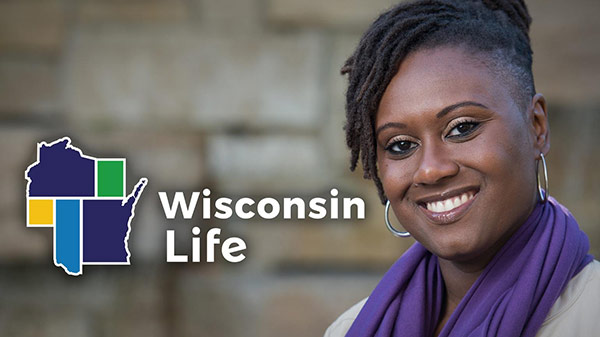

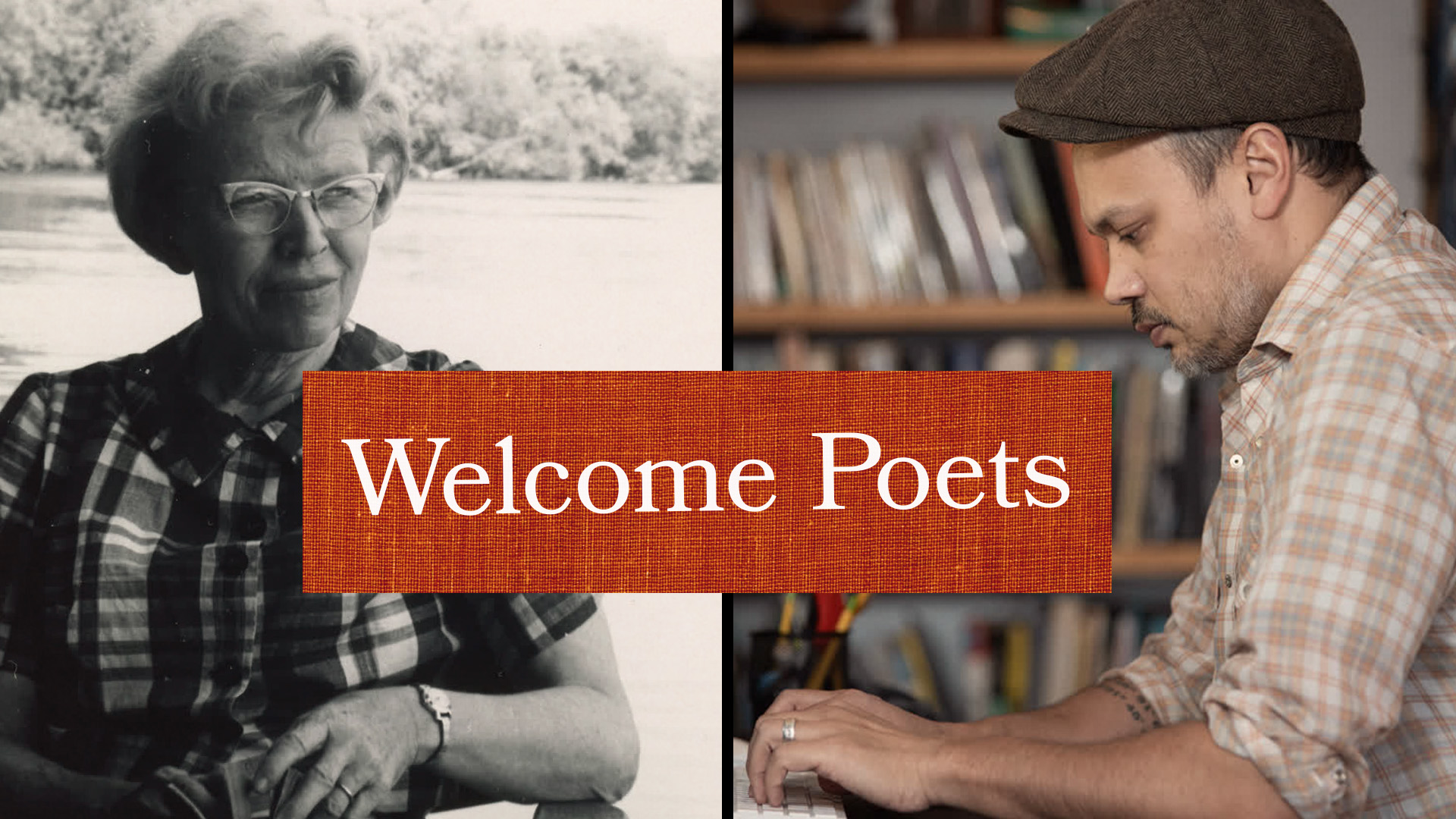








Follow Us